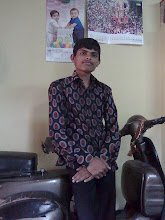UNIT I: Introduction to Control problem
Industrial control examples, transfer function models of mechanical systems, transfer function models of
electrical systems, transfer function models of thermal systems, transfer function models of hydraulic
systems, systems with dead time, control hardware and their models, electro-pneumatic valves,
pneumatic actuators, closed loop systems, block diagram and signal flow graph analysis, transfer
function.
UNIT II: Basic Characteristics Of Feedback Control System
Stability, steady state accuracy, transient accuracy, disturbance rejection, insensitivity and robustness,
stability concept, relative stability, Routh stability criterion, time response of second order system, steady
state errors and error constants, performance specifications in time domain, root locus method of design,
controllers and compensators..
UNIT III: Time and Frequency Response Analysis
Root locus technique, Relationship between time domain and frequency response, polar plot, Bode plot,
stability in frequency domain, Nyquist plots, Nyquist stability criterion, performance specifications in
frequency domain, Nichol’s chart, effects of additional zero and additional poles.
UNIT IV: Introduction to design:
Compensator design (Cascade Lag, Cascade Lead, Cascade Lag-Lead) using root locus plots,
compensator design (Cascade Lag, Cascade Lead, Cascade Lag-Lead) using Bode plots.
UNIT V: State Variable Analysis
Concept of state, state variable, state variable formulation and their solution, state models for liner
continuous time functions, diagonalization of transfer function, solution of state equations, concept of
controllability and observability.
Text Books:
1. “Control System: Principles And Design”, M. Gopal, TMH Pbs.
2. “Automatic Control System”, Kuo, PHI Pbs.
Reference Books:
1. “Modern Control Engineering”, Ogata, PHI Pbs.
2. “Modern Control Engineering”, Nagrath and Gopal, PHI Pbs.
Industrial control examples, transfer function models of mechanical systems, transfer function models of
electrical systems, transfer function models of thermal systems, transfer function models of hydraulic
systems, systems with dead time, control hardware and their models, electro-pneumatic valves,
pneumatic actuators, closed loop systems, block diagram and signal flow graph analysis, transfer
function.
UNIT II: Basic Characteristics Of Feedback Control System
Stability, steady state accuracy, transient accuracy, disturbance rejection, insensitivity and robustness,
stability concept, relative stability, Routh stability criterion, time response of second order system, steady
state errors and error constants, performance specifications in time domain, root locus method of design,
controllers and compensators..
UNIT III: Time and Frequency Response Analysis
Root locus technique, Relationship between time domain and frequency response, polar plot, Bode plot,
stability in frequency domain, Nyquist plots, Nyquist stability criterion, performance specifications in
frequency domain, Nichol’s chart, effects of additional zero and additional poles.
UNIT IV: Introduction to design:
Compensator design (Cascade Lag, Cascade Lead, Cascade Lag-Lead) using root locus plots,
compensator design (Cascade Lag, Cascade Lead, Cascade Lag-Lead) using Bode plots.
UNIT V: State Variable Analysis
Concept of state, state variable, state variable formulation and their solution, state models for liner
continuous time functions, diagonalization of transfer function, solution of state equations, concept of
controllability and observability.
Text Books:
1. “Control System: Principles And Design”, M. Gopal, TMH Pbs.
2. “Automatic Control System”, Kuo, PHI Pbs.
Reference Books:
1. “Modern Control Engineering”, Ogata, PHI Pbs.
2. “Modern Control Engineering”, Nagrath and Gopal, PHI Pbs.




















